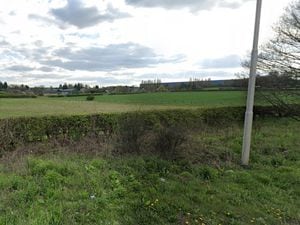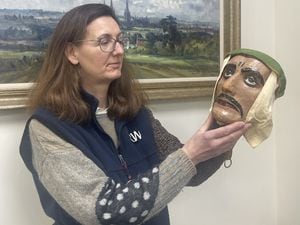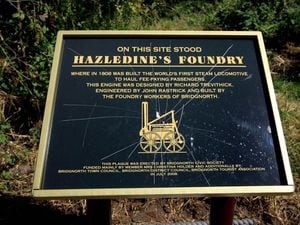Life meant life for wicked killer Raymond Morris
He was described as 'cold, cruel and just plain wicked'. Notorious child killer Raymond Morris, dubbed the Cannock Chase Murderer, was sentenced to life in jail for the horrific rape and murder of schoolgirl Christine Darby in the 1960s.
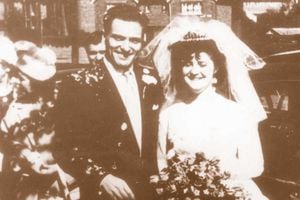
And he was prime suspect in the killings of six-year-old Margaret Reynolds, of Aston, Birmingham and Diane Joy Tift, five, of Bloxwich in 1966 - although never charged.
More recently Morris hit the headlines again when he made a bid to be released, with his solicitors claiming to have uncovered police misconduct, but the case was rejected by the Criminal Cases Review Commission in 2010.
Cannock Chase child murderer Raymond Morris is dead
Star Comment: Few will shed tears for killer Raymond Morris
Then in February this year it was confirmed the killer would die in jail after the Court of Appeal found whole life sentences should continue to be used for the most serious of crimes following a ruling by the European Courts had suggested whole-life terms were unlawful.
Now, within weeks that ruling has become a reality with the death of Morris.
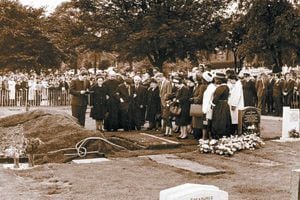
To this day, the Cannock Chase murders have the same ability to shock and provoke anger with unprecedented public interest. The search for the missing girls in the 1960s and the grim discovery of their bodies is a time that is still etched in the minds of those who were living in the area.
Margaret Reynolds went missing on her way to school in Aston on September 8, 1965. Two thousand people searched for the youngster in the hours following her disappearance.
Then Diane Tift disappeared on a short walk to her grandmother's house in Bloxwich on December 30 that year.
Tragically the bodies of both girls were found by a workman dumped in a ditch at Mansty Gully on Cannock Chase on January 12, 1966.
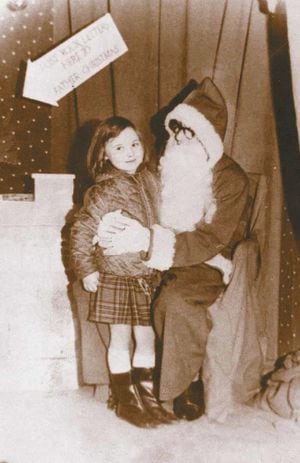
A huge police investigation followed, with endless man-hours spent on tracking down the killer, but to no avail.
Then, in August 19, 1967 seven-year-old Christine Darby was enticed into a grey Austin A55 car by a man near her home in Camden Street, Walsall. She was an only child and lived with her shop assistant mum Lillian and grandparents. The youngster had left her home to play with friends when she was kidnapped at around 2pm.
Witnesses in Walsall said that they saw a man in a grey car who spoke in a local accent. Police search parties were sent out to try and find the youngster. More than 1,000 people joined the desperate search.
Descriptions of the suspect car led detectives to question various locals, including Morris. The matter was reluctantly abandoned after Morris's wife Carol confirmed that he had joined her in a shopping expedition on the day Christine was killed.
Morris was born in Walsall and lived in a council-owned flat in Green Lane - opposite the police station. He married in 1951 and went on to father two boys. He separated from his wife after eight years of marriage and they got divorced. At the age of 35, Morris married again, this time to 21-year-old Carol.
He went through a variety of jobs before landing a position as a foreman engineer at a precision instruments factory in Oldbury in 1967.
The search for Christine attracted unprecedented public interest. Makeshift police desks were set up on pavements in the local neighbourhood as the search intensified.
Days later a policeman found the youngster's underwear on the Chase and Scotland Yard detectives were called in.
The grim discovery of Christine's body was made by a soldier on August 22, 1967, who was involved in the search for the Palfrey Infants School pupil. Her body was found beneath brushwood only a mile away from where Margaret and Diane were discovered. She had been suffocated.
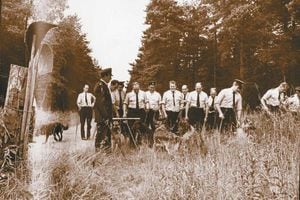
The police inquiry ended up being one of the biggest murder investigations in British criminal history. The manhunt was larger than that of the infamous Moors murders.
The three murders were similar in that each victim was determined to have been coaxed into a car while near her home, then murdered after being sexually assaulted. Christine, Margaret and Diane lived within a 17-mile radius of each other and near the A34 that passes through Cannock Chase.
Prior to making an arrest, 150 detectives visited 39,000 homes, interviewed 80,000 people and checked over a million car forms. The hunt for the Cannock Chase murderer was led by Sir Stanley Bailey, Staffordshire's Assistant Chief Constable at the time.
At the time posters were printed in the Express & Star to help in the search of Christine and e-fit appeals were also printed.
Cannock Councillor Maureen Freeman played a key role in the investigation that led to Morris's arrest. She joined the police force in 1965 at the age of just 21. She was still in her probation period when the first body was found.
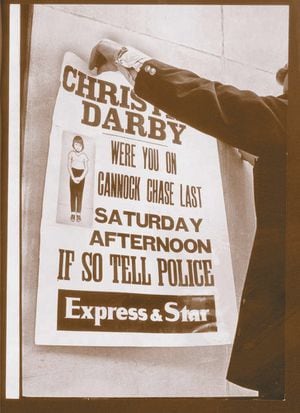
A team was brought together and murder headquarters was set up in New Penkridge Road, Cannock. Scotland Yard was called in.
Miss Freeman and her colleagues had to man the phones and take calls from members of the public, as well as taking hundreds of statements. She was also tasked with carrying out searches on Cannock Chase. The breakthrough in the case came on November 4, 1968, when 10-year-old Margaret Aulton was unsuccessfully abducted by a man in Walsall driving a green and white Ford Corsair. A housewife witnessed the attempt and made a note of the car's registration number, which police later traced back to Morris.
Throughout the duration of the investigation, Morris had been spoken to on four occasions by officers but he slipped through the net. He was ruled out of Christine's death after his ex-wife Carol gave him an alibi, saying they had been out shopping on the day she was murdered.
But, after discovering pornographic images of children in his flat, his wife turned him in to police and admitted the alibi she gave him was false. Police arrested Morris 15 months after Christine's body was found.
Morris was also a suspect in the case of missing ten-year-old Jane Taylor, but her body was never found and the case was abandoned.
The trial of Morris resulted in queues of people scrambling for seats in the public gallery at the court in Stafford.
His wife Carol was chief witness for the prosecution and she retracted what she had initially told investigators about shopping on the day of Christine's murder.
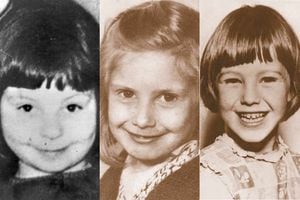
At trial, with her admission that the shopping alibi had been a fabrication, Morris was convicted and received a term of life imprisonment in February 1969. The former engineer was locked up for nearly 45 years.
Decades later Morris was described as 'cold, cruel, and just plain wicked' by a former police chief who was in charge of the investigation.
Former detective chief superintendent Pat Molloy, one of three leading officers on the case, maintained in the years that followed that he had no doubt Morris was guilty of killing Christine.
"I am quite happy that he is a guilty man and that he is a killer," Mr Molloy, who wrote a book on the murders, said. "For one thing, the Cannock Chase murders and abductions of little girls were going on for four years and involved such a huge operation.
"It stopped dead after his arrest. There were no more afterwards and there have been no more since. I would describe him as cold, cruel, lustful and just plain wicked." Miss Freeman was chosen to go to Stafford for the trial and described Morris as having 'cold and calculating' eyes. In November 2010 when Morris was granted a judicial review, the family of Diane Tift spoke of their anger at the news.
Her brother Terrence was the last to see her alive and said the family had never recovered from the tragedy. Mr Tift, was aged nine at the time. He said feelings were still 'very raw' over what happened to his sister.
At the time he said: "I was heartbroken over it afterwards because I never got to see my sister again. Raymond Morris should die in jail and be left there to rot.
"Life should mean life. We still miss Diane even though it's been over 40 years. We've missed out on her growing up and having a family of her own."
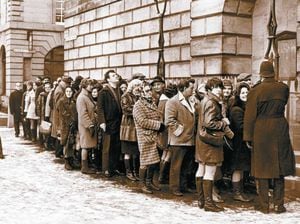
In 2010 it emerged Morris was living a 'quiet and simple' life in prison, with other inmates unaware of his notoriety, his solicitor said. The years in jail had 'taken their toll' on him. Morris was behind bars at HMP Wymott in Preston.
His solicitor Amy-Jo Cutts told the Express & Star at the time: "He is physically well but the years have taken their toll.
"It has been quite a battle for Ray, who has always maintained his innocence. He is largely anonymous in prison because he has not got that notoriety among the younger generation of inmates. He lives a quiet and simple prison life and doesn't want that notoriety and huge stigma."

